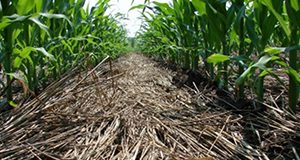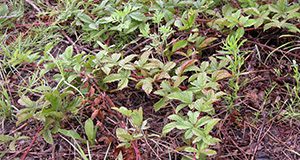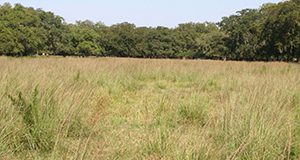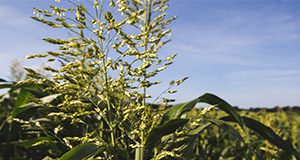When utilizing cover crops for weed suppression, one important consideration is effective termination before planting the main crop. A major issue with improper termination is that the cover crop can become problematic and compete with the main crop, like other weeds. However, proper planning of the termination timing and method can minimize these issues and maximize the benefits of cover crop use. This 5-page publication discusses herbicide application, roller-crimper termination, tillage, and appropriate growth stages for termination. Written by Pratap Devkota, Michael J. Mulvaney, and David Wright, and published by the UF/IFAS Agronomy Department, February 2021.
https://edis.ifas.ufl.edu/ag449
Tag: Pratap Devkota
Boom Sprayer Calibration Tables
This 13-page publication is meant to make calibration of boom sprayers easier, and therefore more common, by providing a convenient chart that can be kept in barns, tractor cabs, sprayers, and mix-load facilities for quick reference. Written by Michael J. Mulvaney, Pratap Devkota, Ethan Carter, De Broughton, and Mark Mauldin, and published by the UF/IFAS Agronomy Department, November 2020.
https://edis.ifas.ufl.edu/ag446
Blackberry and Dewberry: Biology and Control
Blackberry and dewberry are often viewed as nuisance weeds that reduce grazing in a portion of the pasture. However, severe financial losses can occur if these growing thickets injure cattle. This 4-page document provides information regarding blackberry and dewberry management in pastures. Written by Brent Sellers, Pratap Devkota, and Jason Ferrell, and published by the UF/IFAS Agronomy Department, revised November 2020.
https://edis.ifas.ufl.edu/ag238
Smutgrass Control in Perennial Grass Pastures
This 4-page document provides an overview of smutgrass biology, control, and general recommendations. Written by Brent Sellers, Neha Rana, José Luiz C. S. Dias, and Pratap Devkota, and published by the UF/IFAS Agronomy Department, revised October 2020.
https://edis.ifas.ufl.edu/aa261
Adjusting Crop Yield to a Standard Moisture Content
Since there are different ways to report moisture (as a decimal or as a percentage), and because the calculation seems intuitive, there is some confusion among agricultural professionals about how to adjust yield to a standardized moisture content. This 4-page publication aims to clarify the concept and the math. Written by Michael J. Mulvaney and Pratap Devkota, and published by the UF/IFAS Agronomy Department, May 2020.
https://edis.ifas.ufl.edu/ag442
Amaranthus palmeri—Palmer Amaranth
Palmer amaranth has become one of the most troublesome weeds in the southeastern US due to its vigorous growth rate, high seed production, and development of resistance to herbicides from multiple modes of action. This 4-page publication illustrates characteristics of this weed to assist in accurate identification, proper management, and development of effective control strategies. Written by Sergio Morichetti, Jason Ferrell, and Pratap Devkota, and published by the UF/IFAS Agronomy Department, revised April 2020.
https://edis.ifas.ufl.edu/ag346





